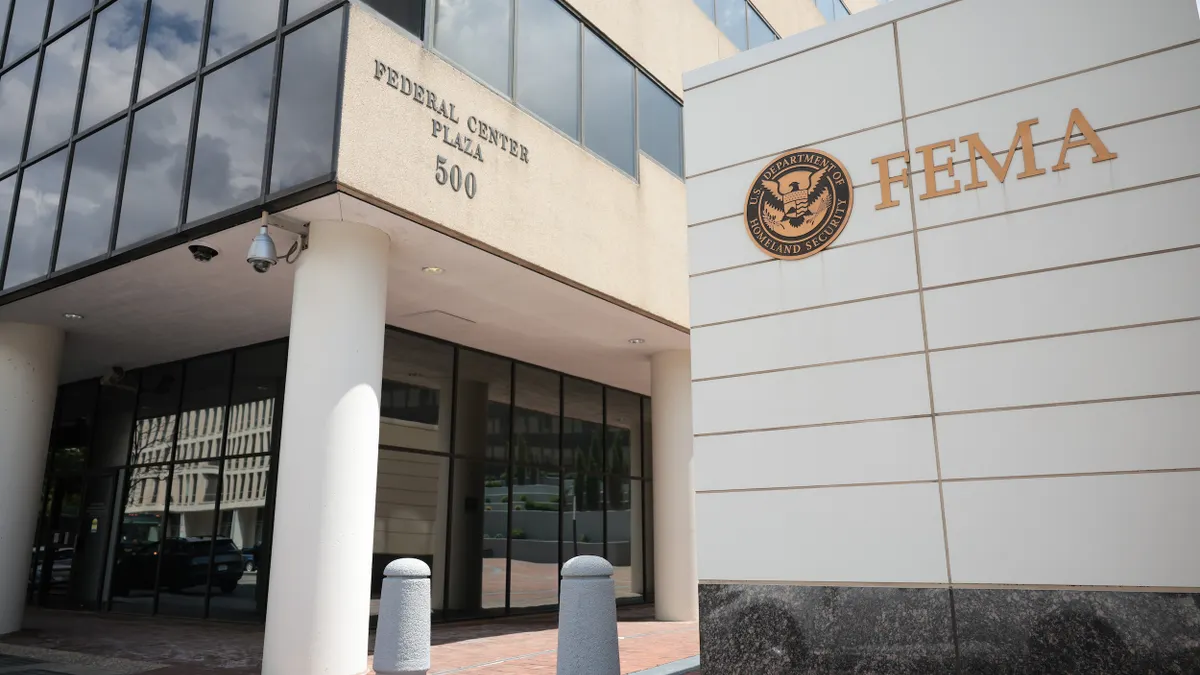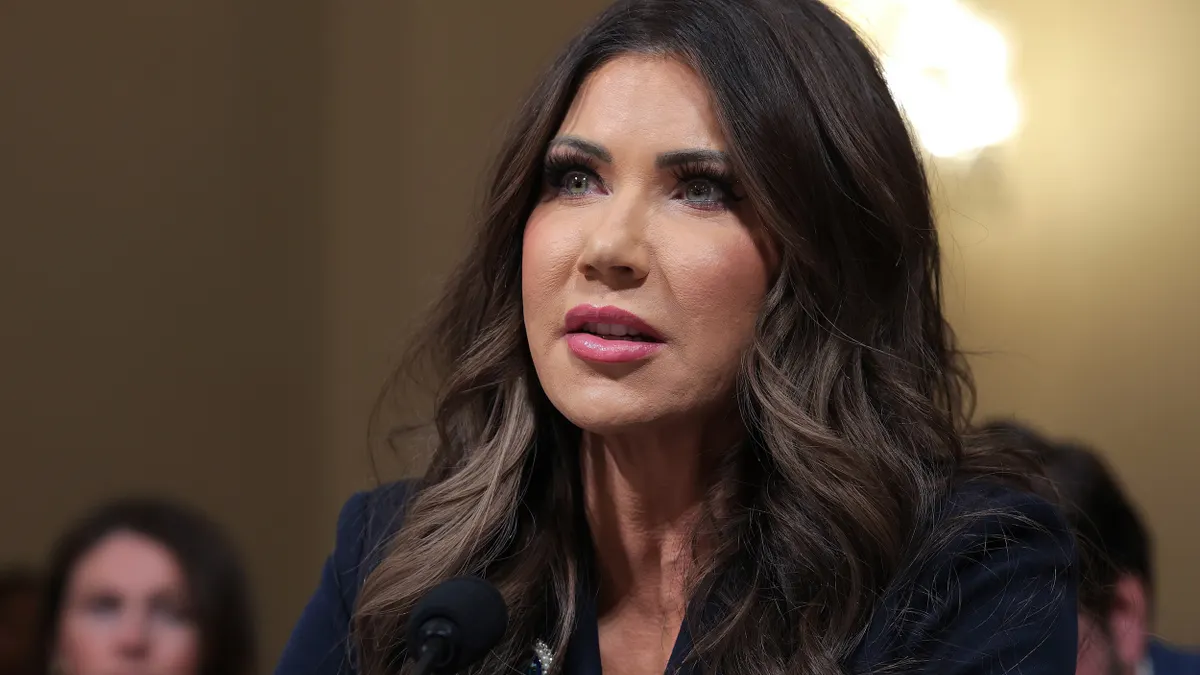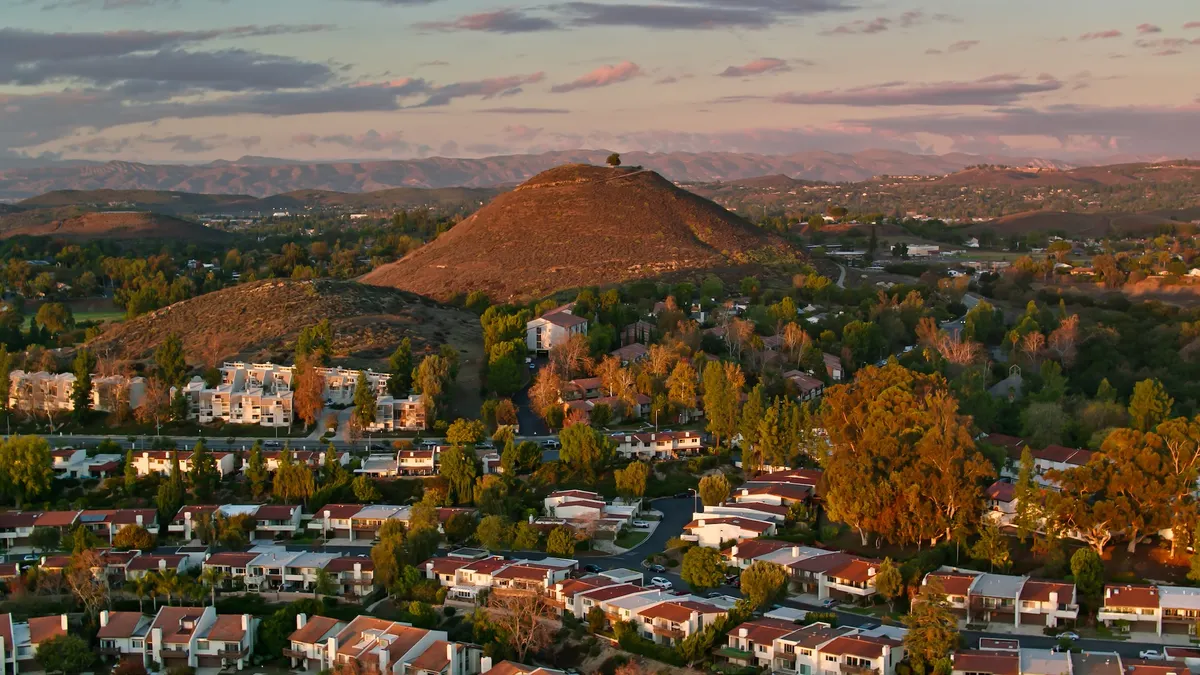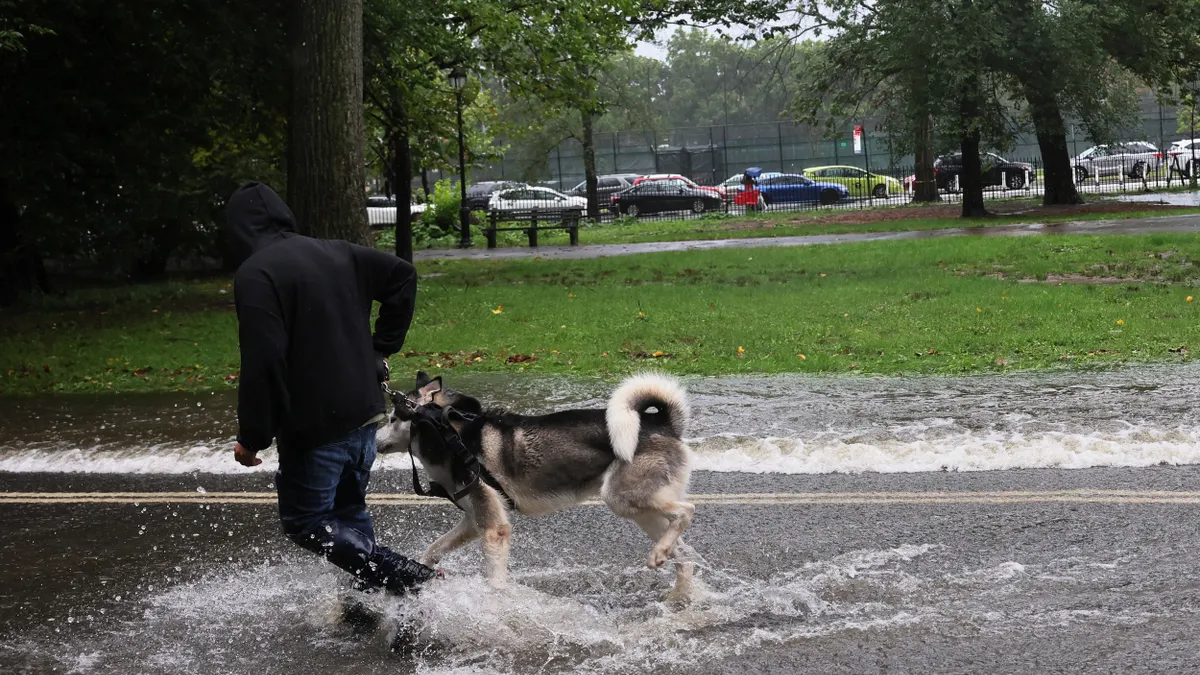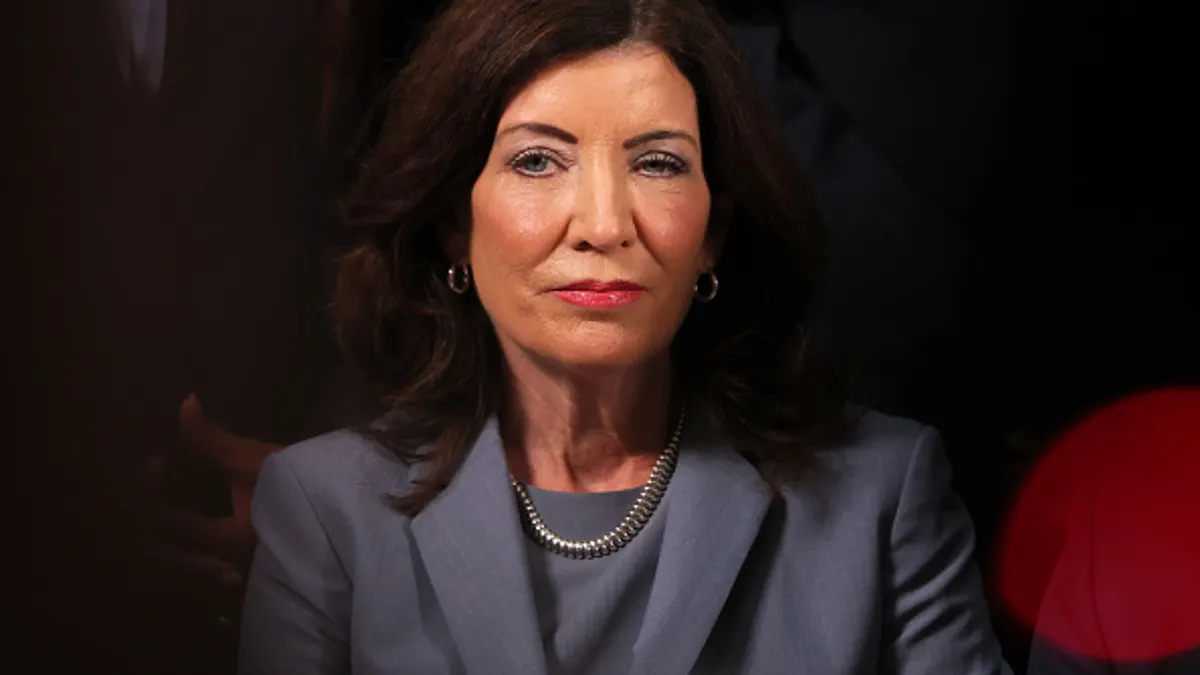It was never a secret that Houston is susceptible to flooding. Ever since the city was established in 1836, it has experienced heavy rain, leading to knee-deep waters and destroyed structures. In fact, Harris County — a region that is almost entirely flat — suffered 100 years of major flooding before the Harris County Flood Control District was finally established in 1937.
In the decades following, the city was slow to implement impactful flood mitigation standards, despite its history. Tropical Storm Allison ripped through the county in 2001, earning the title as the most devastating (and costly) storm to ever hit Houston at the time. However the city quickly exhausted itself of political and public good will to integrate significant, long-lasting improvements.
Then came Harvey.
On Aug. 25, 2017, Hurricane Harvey took the city as a victim, inundating the area with torrential rainfall, catastrophic winds and dozens of tornadoes. The National Hurricane Center (NHC) detailed Harvey as the second-most costly hurricane in the U.S., behind Katrina (2005), and the most fatal storm in Texas since 1919.
| Facts & Figures | |
|---|---|
| 40 inches | Average amount of rainfall across region affected |
| 1 trillion gallons | Total amount of rainfall across Harris County over 4-day period |
| 270,000 | Number of homes impacted |
| 68 | Estimated number of deaths directly related to Harvey |
| $125 billion | Estimated damage from Harvey |
| 200 million cubic yards | Total amount of debris |
| 8.3 million pounds | Total amount of unpermitted air pollution |
| Sources: NHC, Environmental Integrity Project, Harris County Flood Control District |
While Harvey was labeled as a "500-year flood," such a title is not literal, but instead is attributed to the city's floodplain. The map details areas of inundation that have a 1% chance of being equaled or exceeded in any given year (known as a 100-year floodplain) and 0.2% chance of the same (a 500-year floodplain). This means there's a real possibility for a storm of this severity to happen again in the near future — which some leaders see as inevitable.
"Harvey had a magnitude that people are just beginning to understand," Houston Chief Recovery Officer Marvin Odum told Smart Cities Dive. "What we're planning against is Harvey as the new baseline. Not Harvey as a one-off storm."
Odum was hired by Mayor Sylvester Turner in September 2017 to serve — without salary — as Houston's first recovery officer, a position created to guide the city's post-Harvey revival and use the floods "as an opportunity to make more improvements." As the retired president of Shell Oil Company, Odum stepped into the new position as someone with experience in leading large organizations — and handling enormously expensive projects.
"I won't say it was a complete no brainer, but I made the decision within a couple of hours that this is a unique opportunity to help an area that's extremely important to me and affected so many people that I know," said Odum, a lifelong Houstonian. "When [Turner] called me, I think it was a recognition that something different is required in the city." He described Houston as "a billion dollar a year organization sitting on top of a $20 billion-or-more problem," which he said calls for a special mindset and strategy.
And Odum was not starting from zero. Immediately following Harvey's presence in Houston, the city and surrounding region welcomed support from more than 30,000 federal staff, as well as thousands of volunteers from both near and far who ran to the aid of the survivors. As of early September, more than $150 million had been donated or pledged to hurricane relief efforts, and organizations like the Greater Houston Partnership, United Way, Houston Endowment and Rebuild Texas all stepped in to help.
But rebuilding Houston — and specifically implementing long-term mitigation — is a tricky task. It not only requires billions of dollars and thousands of hands on-deck, but also a comprehensive blueprint of everything Houston must do to remain resilient in the coming decades, and promote itself as an attractive, innovative metropolitan area for continued growth.
"We call it building forward, not just building back," said Odum.
A multi-billion dollar headache
Regardless of Odum's leadership experience or eagerness to speed up recovery, the city has been crippled by the outrageous price tag of rebuilding. As of early August 2018, the city had assessed the damage of 350 individual projects and is working with the Federal Emergency Management Agency (FEMA) to agree on how much mitigation money is available for each project. More specifically, the money is decided based on the process of repairing or fully moving the structure so it will no longer be in harm's way if and when another storm hits.
This damage assessment is as far as the city has gotten with FEMA, as most recovery money has not yet hit the ground in Houston. For housing recovery, the city is expected to receive $1.15 billion from FEMA, which is anticipated in November — a full 14 months after the storm.
I continue to emphasize that hundreds of millions of dollars in federal aid for housing and flood mitigation after #HurricaneHarvey have not yet arrived for us to use. We hope to see the 1st funds by November.
— Sylvester Turner (@SylvesterTurner) August 29, 2018
Odum said the only money currently on the ground is from the National Flood Insurance Program (NFIP). As of January, the NFIP had paid out more than $8 billion in flood insurance claims, according to Business Insurance. Aug. 25, 2018 marked the deadline for individuals to file a Proof of Loss form to NFIP.
Despite the lack of federal funding, some progress has been made in the past year thanks to local philanthropic efforts. Bob Harvey, President and CEO of the Greater Houston Partnership, told Smart Cities Dive that Harvey sparked the "largest fundraising effort related to a natural disaster that Houston had ever seen."
That willingness to help also inspired a transformative idea to cash in on volunteer services. Traditionally, support from FEMA comes with a mandatory local match requirement of 10%, which means Houston would need to pay $0.10 on every dollar received for recovery. However the city's surplus funds were exhausted after initial response to the storm, so Odum and his team requested that FEMA offset the match requirement with volunteer or donated services.
"We thought, if we have people that are willing to come out, companies that are willing to come out, others that are willing to donate materials, can we count that against our match? Therefore you’d essentially get a double benefit — you get that free service from the community and you get to counter it against this 10% match that you owe," Odum explained.
Though FEMA was hesitant to agree to the deal at first, the agency sided with Houston's proposal after six months of discussion. It also took the extra step to make this a nationwide policy, pointing to Houston as the new model for how this can be done in other cities.
Gearing up to face the next storm — whenever it may come
Though the city is still waiting for most federal funds to be placed in its hands, some of the confirmed funds illustrate how Houston is moving in a direction of smart, strategic development. In March, Houston secured $9.4 million for high-water warning systems that involve cameras, sensors and computers. The city also experimented with inundation mapping — which evaluates full topography of the surrounding land — to simulate the flooding at various points during the rainfall based on data and drone footage, according to Odum.
"Hurricane Harvey, in many respects, did more to pull this community back together than just about anything I’ve seen in my lifetime."

Bob Harvey
President and CEO, Greater Houston Partnership
Additionally, voters this week approved $2.5 billion in bonds to be used for mitigation, such as expanding the size of bayous and adding stormwater detention basins.
"We’re not stuck in any kind of rut. Things have continued to move forward," said Harvey. Most importantly, Harvey emphasized how the city has progressed as one cohesive, collaborative unit, not a municipality siloed by differing objectives.
"Hurricane Harvey, in many respects, did more to pull this community back together than just about anything I’ve seen in my lifetime," he said. "[The storm] has been, in an interesting sort of way, a positive in terms of getting people to recommit to the community and what it takes to advance the community’s interest."
The city's Innovation District, announced in April 2018, is an example of how the community is advancing its interests and continuing its vision of becoming the "next great center for startups and imaginative endeavors in the digital universe," according to Turner. Accenture is also keeping the spirit of innovation alive in Houston through its own innovation hub, which aims to help industrial clients understand and learn about leading technologies and the talent to support them.
"We're not stopping for anything," Brian Richards, Managing Director of Accenture, told Smart Cities Dive.
And, in case the unity of community and drive for innovation isn't enough to make Houston feel ready for its next challenge, the city this week joined the 100 Resilient Cities network to establish "the strong foundation needed to be prepared and responsive."
.@HoustonTX joins @100ResCities #resilientcities https://t.co/AtDt5OSJYy
— Sylvester Turner (@SylvesterTurner) August 29, 2018
Lessons learned
Just as Houston was not the first city to be swept up by a natural disaster, it certainly will not be the last. The effects of climate change have continued to present themselves in catastrophic ways over the last year, and city leaders across the country must look to Houston and similar metro hubs as examples for how to prepare and proceed.
"It’s a reminder to people like me ... That we have to be more bold in dealing with our public and expressing these needs that may not be imminent, but we know for a fact are real," Harvey said.
To best prepare, Harvey suggests that cities develop clear disaster response plans, and that roles be established in advance so there's a primary recovery official to turn to if needed. He touted the leadership of Turner and the county judge, Ed Emmett, saying that their synchronization "made all the difference" in giving the public confidence that Houston would be restored.
"There's nothing worse than having different community leaders pointing in different directions," he said.
Odum echoed these suggestions and noted that it's most helpful for a municipality to sit down as an entity and clearly outline exactly what you're trying to solve for and be prepared for.
"It very much takes this mindset, despite where you may sit personally on climate change, that takes into account the real information that says these types of storm and weather events are becoming more significant and more frequent, particularly for coastal communities," he said. "We’re going to take Harvey as a baseline, and we’re going to put a safety factor on that, and that’s how we make all of our decisions going forward."










